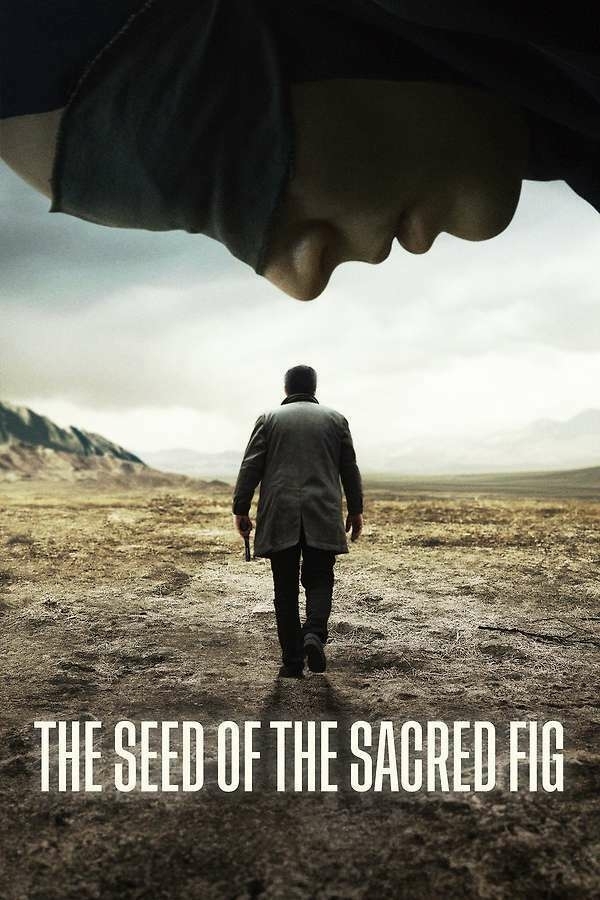The Seed of the Sacred Fig, 2024 - ★★★★½

Movies are often made to entertain, but occasionally they also serve as powerful political statements and forms of activism. The Seed of the Sacred Fig, directed by Muhammad Rasuloff, is one such film. It not only shed light on systemic violence, oppression, and resistance within Iran's regime but also weaves these elements into a compelling narrative.
This is the movie that I hope will define the year— a work where filmmaking is both emotional and profound, making a statement while capturing hearts. It pushes boundaries yet remains deeply rooted in its cultural identity, demonstrating a profound understanding of the current situation while radiating hope, ready to pass the torch to anyone willing to take a stand.
I cannot overstate what a brilliant move it is to use the complexities of family dynamics as a representation for society as a whole, capturing the struggle of living under an oppressive regime. This approach makes the story both urgent and intimate, offering outsiders a clearer understanding. The film does more than deliver a message—it forges an emotional connection with its audience, reminding us that these issues are closely tied to our everyday realities.
The screenplay masterfully frames this family, exploring how divisions within relationships can eventually tear a family apart—gradually at first, and then suddenly everything crumbles. The details and interactions between characters are exceptional, addressing moral dilemmas and offering social commentary. Each dialogue is rich with meaning, purpose, and authenticity. The film cleverly integrates real footage from actual events, seamlessly blending it into the narrative.
The Oppressors
Iman, the father of the family, embodies the oppressive government, gradually evolving in a negative direction. He illustrates how, once ethical boundaries are pushed and the lines between right and wrong are blurred, it becomes easier to abandon moral principles repeatedly until they become instinctual. People stop thinking and start reacting based on what seems necessary at the moment.
This depiction is not just about individual actions; it reflects the entire system. When a system forgets what is right for the country and justifies its actions, it fails to understand the broader context and the people affected by its policies. I appreciate how the film portrays this notion and the overwhelming power these individuals wield over society, which ultimately becomes normalized.
Furthermore, the film uses the metaphor of the sacred fig to critique the Iranian theocratic regime. It highlights the regime's oppressive nature and societal control, creating a suffocating atmosphere that slowly drains the vibrancy of life.
The Mediators
At the heart of the story is the mother, portrayed by Soheila Golestani, who compromises the most and sacrifices so much to keep her family together. This is one of the most realistic and powerful portrayals of a mother managing her household and family that I've ever seen.
Navigating life while witnessing the fractures in your beloved family, and striving with all your might to prevent the family you know and love from crumbling before your eyes, is such a challenging — and sometimes seemingly impossible — task. You might even find yourself being the first to crumble.
Those oppressed by authority are silenced and abused, becoming submissive out of fear for their own lives. This emotional manipulation distorts facts and truths into something one must deflect for survival.
Initially, the oppressed individuals are silenced and compelled to comply with their oppressors while trying to find compromises for each side, but eventually, they yearn for escape and an end to suffering.
I find this aspect particularly poignant, and encapsulates the sentiments that many people have been feeling, though outsiders often overlook this perspective and turn a blind eye.
The Rebels
Some viewers might be turned off by the third act, as it shifts more toward a thriller genre. However, I find it fitting for the story. When discussing oppression on a societal scale, people often lack sympathy and empathy, dismissing it as an out-of-sight, out-of-mind issue. But when scaled down to a domestic level, the danger and urgency of controlling dynamics become starkly evident. It’s a race against time, where one side attempts to catch and control, while the other desperately tries to survive and escape.
Seemingly trivial interactions and conflicts may appear insignificant at first, but if no one listens and sets aside personal interests, they can escalate into something far more problematic. When opposing sides confront each other, it creates mistrust, paranoia, and disruption, tearing everything apart. Trust becomes a rare commodity, and no one listens to one another. Each side drifts further apart, creating larger divides over time. You can see the cracks developing, and eventually, something will break.
The younger generations, if they want to break free—not break apart—from such dynamics, must be smarter and more proactive. They need to speak out and devise strategies to overcome their oppressors.
I love how all of this is conveyed and portrayed in the third act, which effectively summarizes the feelings surrounding the entire situation. The cinematography, sound design, music, and editing all work together to create a truly immersive experience.
Summary
This movie brilliantly captures the struggle of living under an oppressive regime. It is a powerful and significant film deserving of praise across all categories, excelling in every aspect. The brilliant performances enhance the film’s power and emotional depth, illustrating the desire to break free and find a balance between freedom and compromise—until compromise is no longer possible.
Rasuloff's direction is both brilliant and profound. His courageous decision to create this film, despite risks to his own life, underscores his commitment to using cinema as a catalyst for positive change in Iran. I wholeheartedly encourage people to watch this movie and hope his mission achieves the impact it aims for.